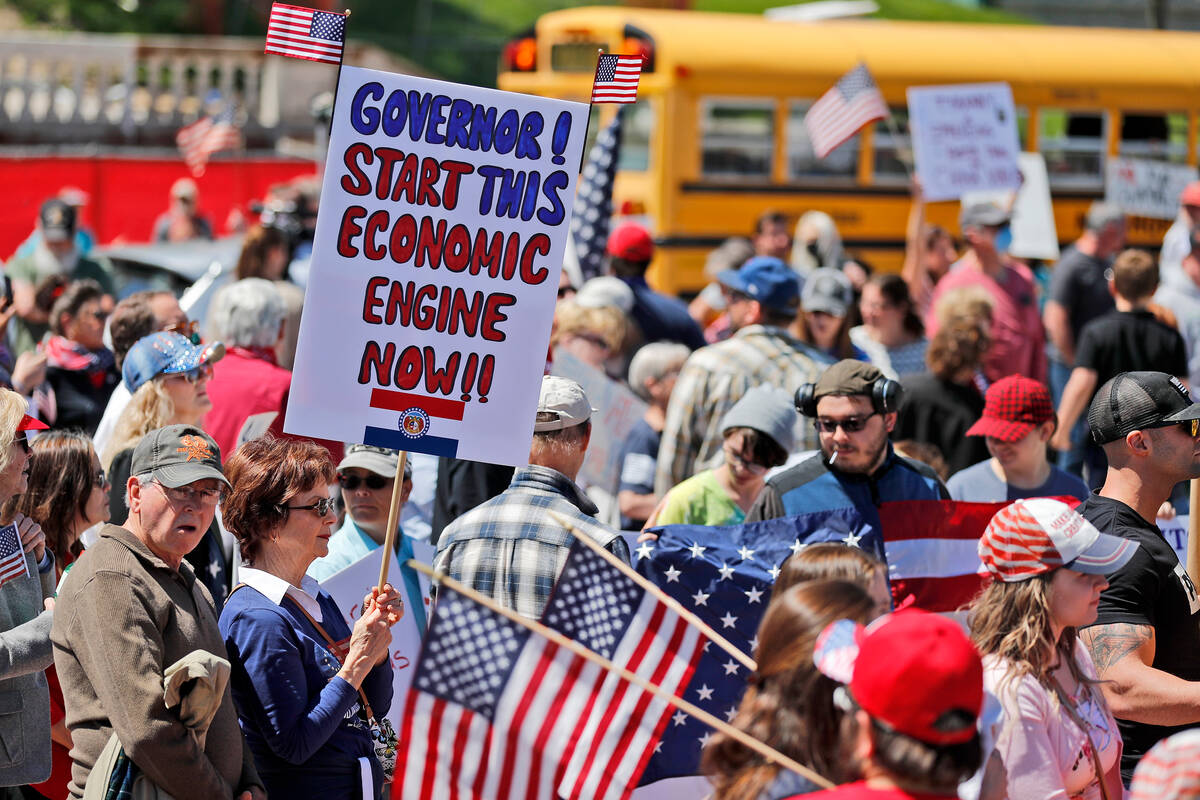Bussiness
COMMENTARY: COVID showed Americans the cost of bureaucratic incompetence

The COVID-19 pandemic epitomizes the federal bureaucracy’s callousness toward responsible stewardship and efficient management of government resources during a crisis. The bureaucrats and the government that enables them don’t care.
The government spent $4.5 trillion on COVID response efforts targeting economic relief, health care and support for businesses and individuals. Unfortunately, a significant part of these funds was wasted, contrasting sharply with the investments made for preparation and response in the prior decade.
Since March 2020, it is estimated that more than $300 billion was wasted on fraud in pandemic relief programs. Last September, the GAO estimated the total amount of fraud across all Unemployment Insurance programs (including the new emergency programs) during the pandemic was between $100 billion and $135 billion. This represents 11 percent to 15 percent of the UI benefits paid during the pandemic.
The Paycheck Protection Program also experienced significant levels of fraud. As much as 15 percent of all PPP loans — $120 billion — were suspicious or fraudulent. The Justice Department is addressing significant fraud that is afflicting other relief efforts.
According to Michael C. Galdo, the acting director of COVID-19 Fraud Enforcement, of the 371 defendants that Justice has charged, 63 allegedly had ties to violent crime or violent gang members, and 25 allegedly have connections to transnational crime networks. Gang members reportedly used some of the pandemic funds to finance murder-for-hire schemes.
Much of the waste was more routine bureaucratic bungling. Exact figures are hard to nail down, but reports indicate billions were wasted on unusable or overpriced personal protective equipment and medical supplies. Large sums were spent on contracts for PPE that either failed to meet medical and safety standards or were never delivered. Some sources estimate that $1 billion was spent on faulty or substandard medical supplies and PPE: masks produced in China, protective gowns, ventilators from a federal stockpile, etc. Consumers felt the exorbitant spike in prices of hand sanitizer, masks and protective gloves.
The sheer scale of these losses highlights significant challenges in managing and overseeing emergency relief funds during a crisis. Contrast the $4.5 trillion spent on the COVID pandemic with the $2 billion spent annually for pandemic preparedness before COVID-19. Those sums often focused on building infrastructure and stockpiles rather than direct monetary relief. A nearly 10 percent shrinkage — fiscal loss due to fraud, theft or mismanagement — is absurd. In four years, the government likely lost 20 times what was spent in the previous decade on pandemic preparation.
The nation had spent billions on preparation and planning for a biohazard attack or event. Whatever we learned was quickly discarded or undone by the bureaucracy’s lack of accountability, transparency and humility. Untold man-hours of research, planning and training were negated by a corrupt lust for power, greed, hubris, scientific misconduct, outright fraud and mismanagement.
The government’s clumsy and inconsistent management of the effort to contain and neutralize the pandemic dramatically increased the national debt and destroyed trust in public health professionals and health institutions.
Since the end of the pandemic, states and localities have given away the surplus stockpiles of pandemic supplies. According to Georges Benjamin, executive director of the American Public Health Association, this waste of supplies reflects a lack of preparation and planning, “leading to panicked overbuying in emergencies.”
Meanwhile, the fiscal circus becomes more grandiose. The 2024 budget proposal requested $90 billion over the next five years — $18 billion annual average — for pandemic preparation. That’s a ninefold increase compared to pre-COVID expenditures. This cycle of spending, underusing or giving or throwing away federal dollars and resources brings us back to Benjamin’s observation about preparation and planning.
Why should the public feel confident the medical governing elites have learned the correct lessons, made significant corrections and adopted fiscal discipline as a core value? Numerous FOIA requests have been submitted to ascertain what evidence is driving public officials’ requests for this increase in funding of supplies that turned out to be a poor investment in the past.
Are we throwing good money after bad? The government health bureaucracy has a lot to answer for and improve.
Martin Hoyt is the director of Public Health Reform Alliance. He wrote this for InsideSources.com.










